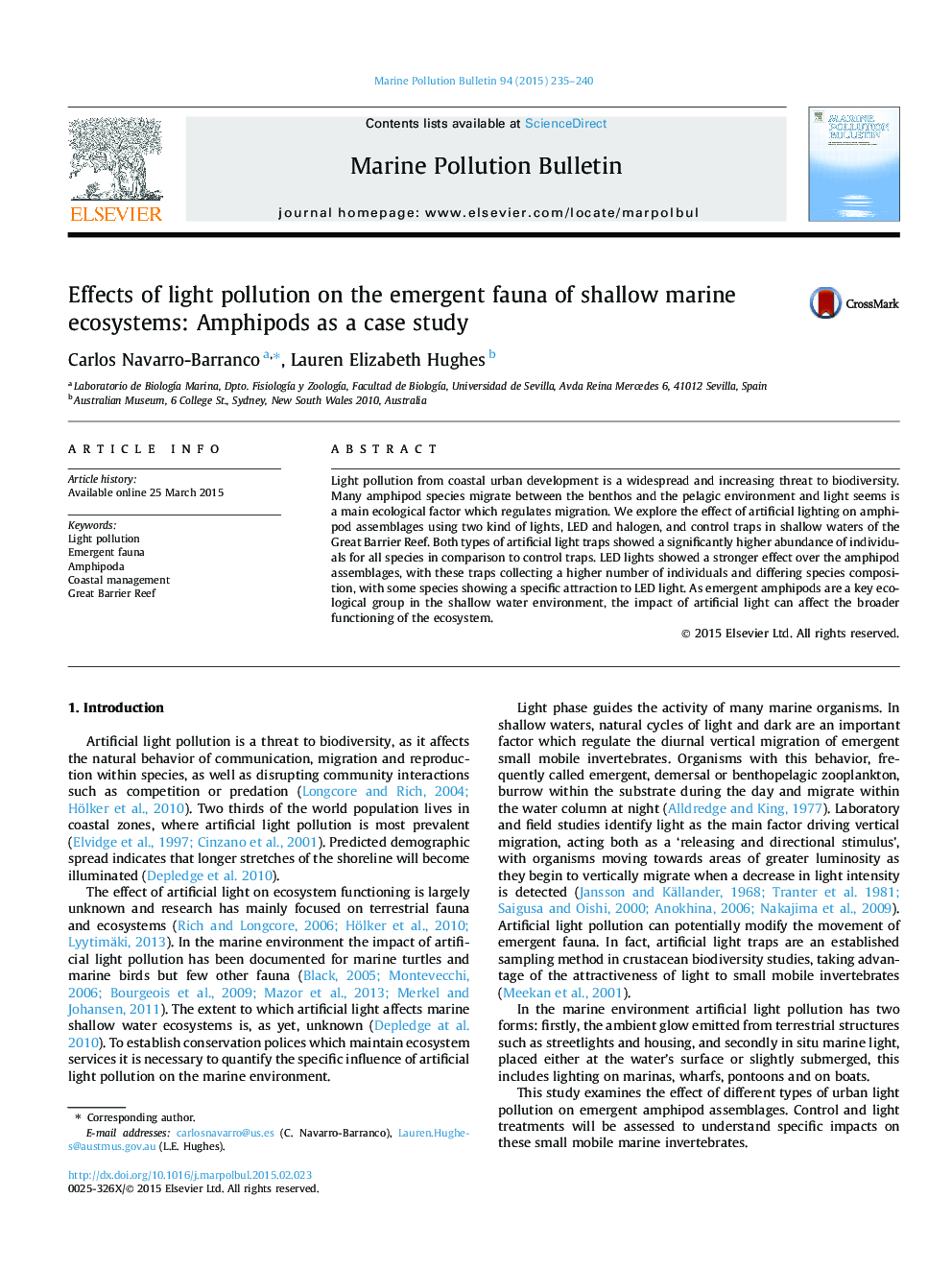| Article ID | Journal | Published Year | Pages | File Type |
|---|---|---|---|---|
| 6356848 | Marine Pollution Bulletin | 2015 | 6 Pages |
â¢Light pollution significantly modifies the behavior and distribution of emergent amphipods.â¢Both LED and halogen lights generate a significant increase in the abundance and thus biomass of artificially lit areas.â¢LED lights showed a stronger effect than halogen lights on the composition of amphipod assemblages.â¢Moon phase had no significant effect on the amphipod assemblage studied.
Light pollution from coastal urban development is a widespread and increasing threat to biodiversity. Many amphipod species migrate between the benthos and the pelagic environment and light seems is a main ecological factor which regulates migration. We explore the effect of artificial lighting on amphipod assemblages using two kind of lights, LED and halogen, and control traps in shallow waters of the Great Barrier Reef. Both types of artificial light traps showed a significantly higher abundance of individuals for all species in comparison to control traps. LED lights showed a stronger effect over the amphipod assemblages, with these traps collecting a higher number of individuals and differing species composition, with some species showing a specific attraction to LED light. As emergent amphipods are a key ecological group in the shallow water environment, the impact of artificial light can affect the broader functioning of the ecosystem.
